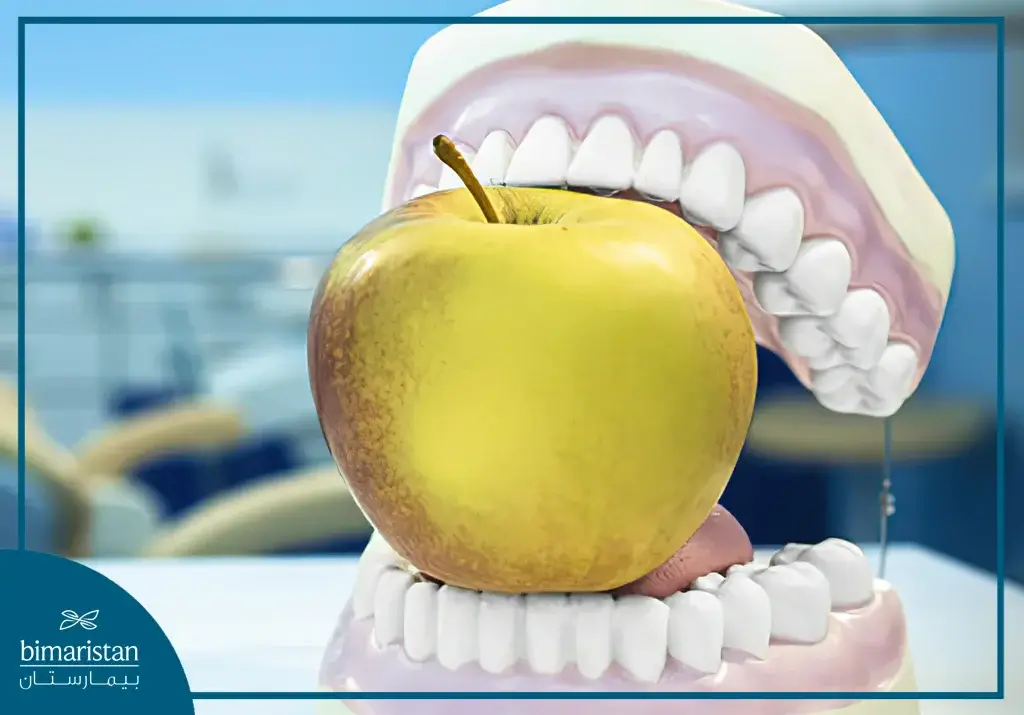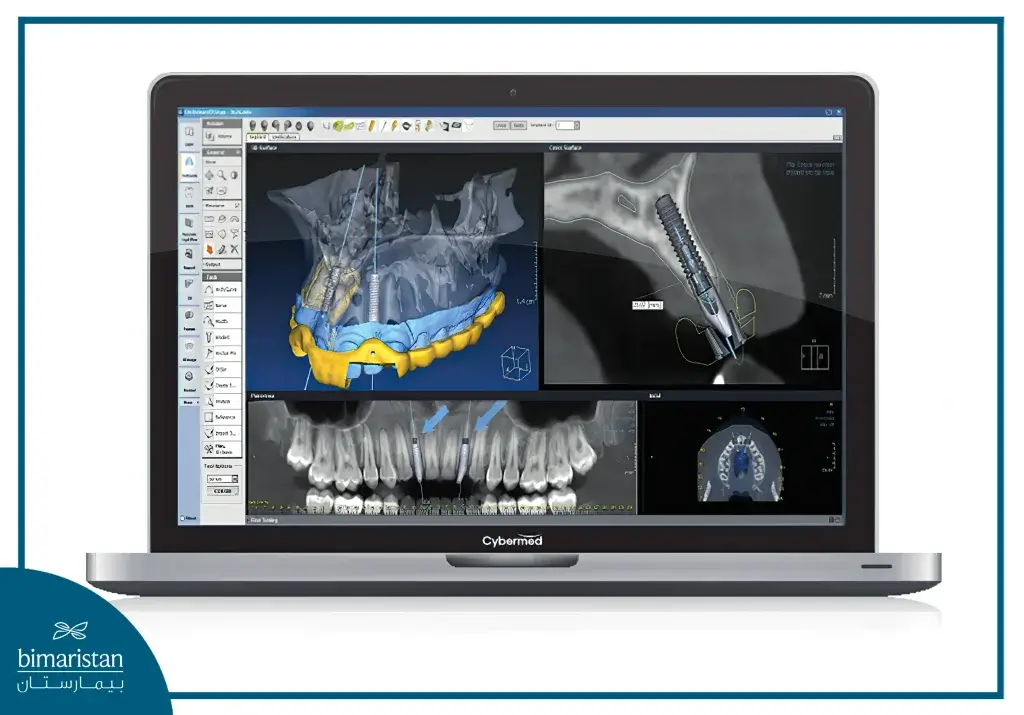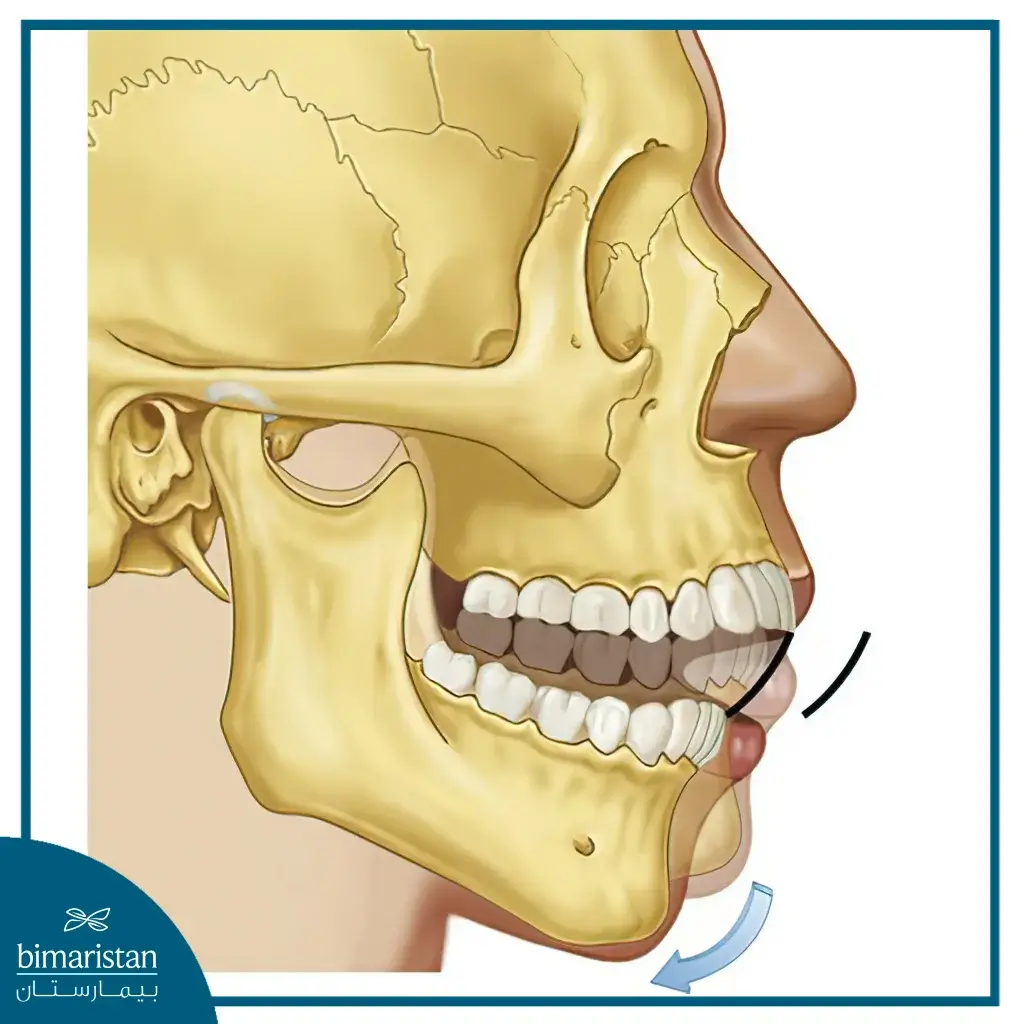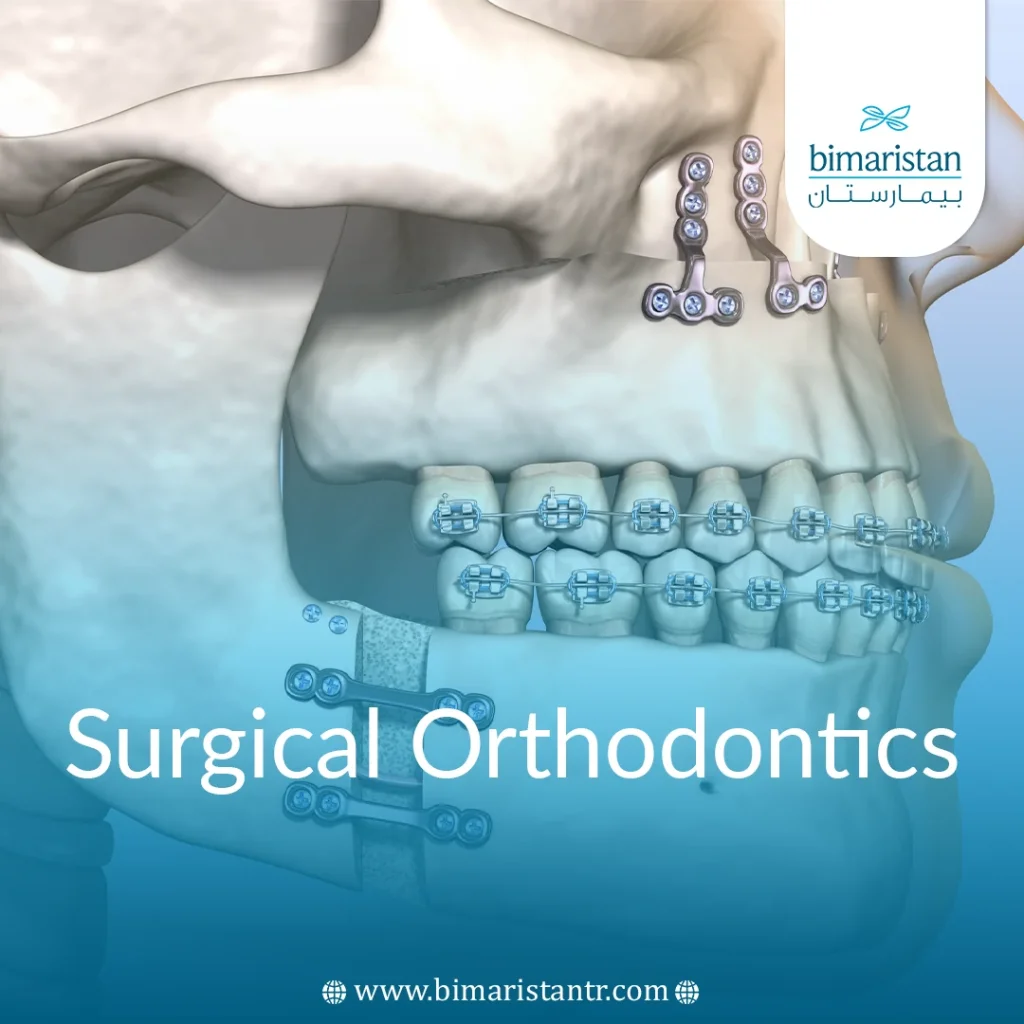Surgical orthodontics is a necessary medical procedure to improve the harmony of teeth and jaws, especially in cases that cannot be treated with traditional orthodontics. In Turkey, this type of treatment is in high demand due to the great medical progress and the extensive experience of specialist doctors, in addition to the reasonable cost compared to many other countries.
In this article, we will highlight surgical orthodontics in Turkey, when it is necessary, how to prepare for it, the steps followed during the process, and the benefits and potential risks to help patients understand this process and make an informed decision about undergoing it.
What does surgical orthodontics include?
In the same way that braces correct tooth deviation, surgical orthodontics (or orthognathic surgery) corrects jaw irregularities to improve patients’ ability to breathe, eat, and speak and to improve the appearance of the face.
Moving the jaws also moves the teeth, so installing braces is always part of jaw correction as it helps ensure the teeth are positioned correctly after surgery.

Who is a good candidate for orthodontic surgery?
To know if you are a good candidate for orthodontic surgery, it depends on your jaw development.
If the upper and lower jaws grow at different rates, this can lead to discrepancies in size and function. Corrective jaw surgery seeks to correct these facial bone abnormalities by aligning the jaws properly. When combined with orthodontic surgery, the result is a balanced bite and straight teeth with the perfect balance of form and function.
If you have any of the following, you may want to consider orthodontic surgery:
- Difficulty chewing, biting, or swallowing
- Chronic jaw or temporomandibular joint pain and headaches
- Advanced jaw (when there is a gap between the upper and lower teeth when the mouth is closed)
- Asymmetrical facial appearance from the front or side
- Jaw or facial deformity resulting from direct trauma
- Congenital defects
- Recessed lower jaw and chin
- Protruding jaw
- Difficulty or inability to bring the lips together without straining
- Chronic mouth breathing
- Sleep apnea
Fortunately, jaw surgery is not always necessary. Even in some severe cases, many cases that previously required surgical intervention can now be treated with orthodontic treatment alone.
However, these cases are individual, and each patient’s situation must be evaluated individually, and the appropriate treatment method must be chosen. Whether you need orthodontic surgery depends on your personal condition. The only way to know if you are suitable for surgical orthodontics is to schedule a consultation with a dentist. You can contact the most skilled doctors at the Bimaristan Center here.
For cases that require orthodontic treatment and oral surgery, treatment usually begins with orthodontics. The doctor uses types of braces to adjust the alignment of the teeth so that when the jaw is surgically moved, the teeth fit together properly.
After surgical interventions, further treatment may be necessary to adjust your teeth’ position, which requires periodic follow-up.
Stages of Surgical Orthodontics in Turkey
As mentioned earlier, every patient is unique, meaning every case differs from the other. However, the common treatment protocol includes the following:
- Six months of orthodontic treatment before surgery.
- Orthognathic surgery.
- Six to 12 months of orthodontic treatment after any surgical procedure.
Since the introduction of surgical orthodontics to medicine in the past 30 years, there has been continuous improvement in oral and maxillofacial surgery techniques and materials. Orthodontic surgery may be the best way to correct severe jaw deformity and improve function, appearance, and quality of life.
How does surgical orthodontics work?
During orthodontic treatment, which usually lasts 6 to 18 months, the patient wears braces and visits the orthodontist for regular adjustment appointments.
As the teeth move with the braces, many patients feel as if their jaw bite is getting worse instead of better and worry about it. Still, after the jaws are properly aligned during orthodontic surgery, the teeth will fit comfortably in their correct positions.
What happens during surgery?
- Surgical orthodontics is performed in the hospital by a maxillofacial surgeon and may take several hours, depending on the type of surgical intervention required.
- During mandibular surgery, the jawbone behind the teeth is separated, and the tooth-bearing part is moved either forward or backward, depending on the patient’s condition.
- During surgical modifications of the upper jaw, the jaw can be repositioned forward or backward or it can be raised or lowered.
- Some movements may require separating the jaws and adding or removing bones to achieve the desired stability and alignment.
- It may also be necessary to reshape other facial bones that contribute to alignment by increasing or repositioning them.
What results should you expect from jaw correction?
If you feel a little nervous about orthodontic surgery, don’t be! We will take good care of you and make sure you feel 100% comfortable with your treatment.
First, the doctor will examine your jaw and take your medical history to be able to diagnose your condition.
After that, he will tell you if orthognathic surgery is necessary for you and should be part of your treatment plan. No surgery is performed until the jaw bones have fully grown and matured to take their final shape, so this method is limited to adults only.
A group of hospitals, including the Bimaristan Center, specialize in this type of surgery. They include a number of trained and experienced doctors in Istanbul.

We know that the decision to undergo surgical orthodontics is big, so we’re here to provide you with all the information you need to make an informed decision. We can even use digital imaging to show you the immediate and unique benefits of corrective orthodontic surgery so you know exactly what to look forward to and expect.
How long does it take to recover from surgical orthodontics?
Once the surgery is complete, you’ll likely be able to return to work or school in about two weeks.
After the healing time has passed and the bones have healed and stabilized (about 4-8 weeks), your orthodontist will adjust your bite to measure how well the procedure has improved the alignment of your jaws.
In most cases, your metal braces are removed about 6 to 12 months after surgery. After removing your braces, you’ll wear a retainer to maintain your beautiful new smile.
Benefits of Surgical Orthodontics
Speaking of the benefits of surgical jaw straightening, there are many; let’s talk about what is essential and certain for everyone:
- Surgical orthodontics can significantly improve the appearance of a patient’s face by realigning the jaw in a more aesthetically pleasing way.
- This has the added benefit of giving patients a significant boost in confidence.
- In addition, depending on your condition, jaw surgery can help prevent oral diseases and dental problems in the future.
- It can also greatly improve patients’ quality of life by relieving jaw pain and allowing patients to breathe, chew and swallow more easily.
Are there any risks to orthodontic surgery?
There are inherent risks common to any surgical procedure. However, surgical orthodontic procedures are not new or experimental; they are routinely performed in clinics or hospitals on a regular basis. If you or a family member is about to undergo surgical orthodontic treatment, simply ask your surgeon to explain the risks to put your mind at ease.
Can surgery be avoided?
Future facial growth and maturation, combined with timely orthodontic intervention, can correct deviations and contractures of the jaw bone in young patients.

An orthodontist can use one of several straightening devices to redirect bone growth, eliminating the need for surgery in some patients. Still, in adults and patients whose bone growth is complete, the improper relationship between the teeth and the jawbone is often treated with surgery.
Who needs surgical orthodontics?
Surgical teeth straightening may be necessary for someone whose upper and lower jaws are out of position and whose upper and lower teeth do not fit together, impairing the ability to bite, chew, or speak. The orthodontist will work closely with the oral and maxillofacial surgeon to position the jaws and teeth for optimal function.
Sources:
